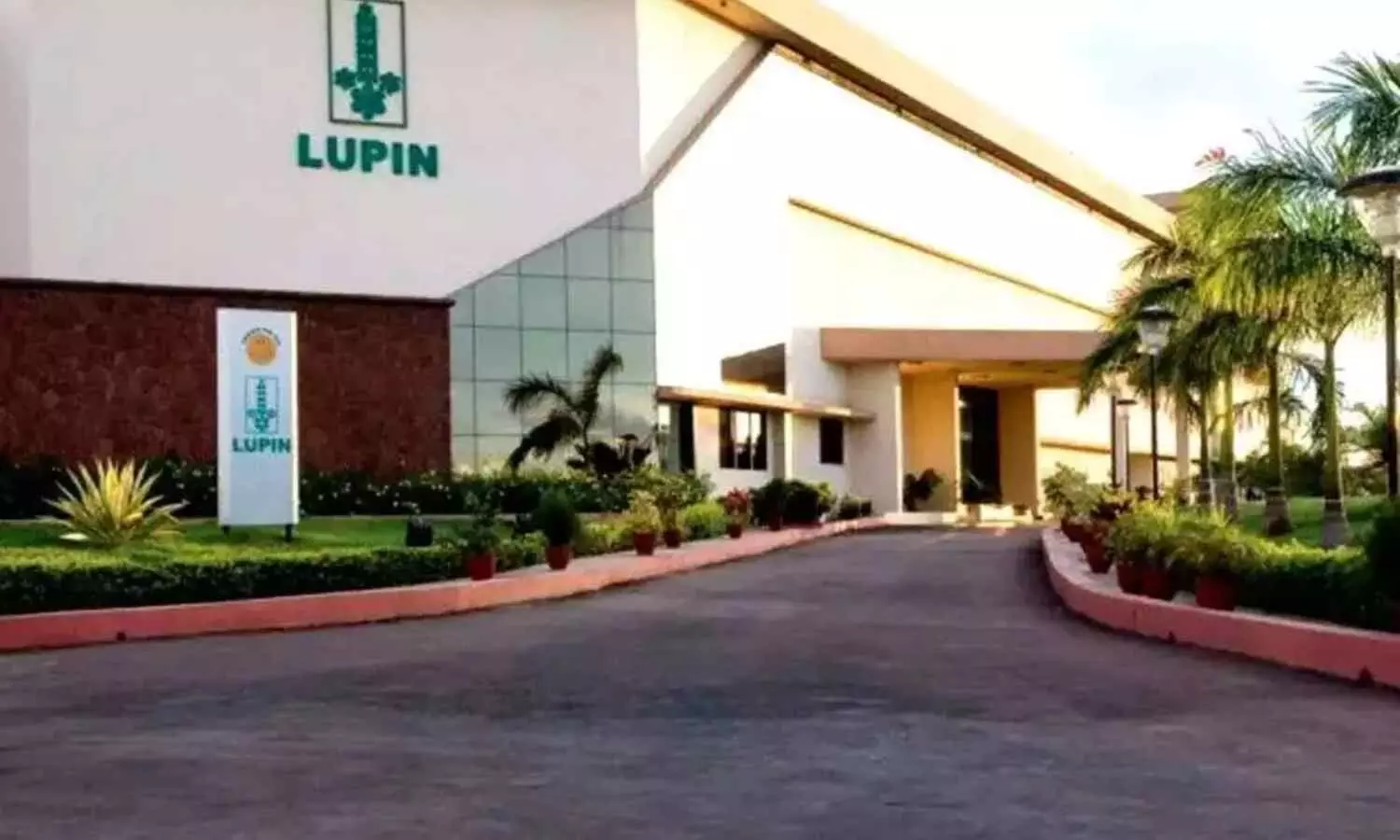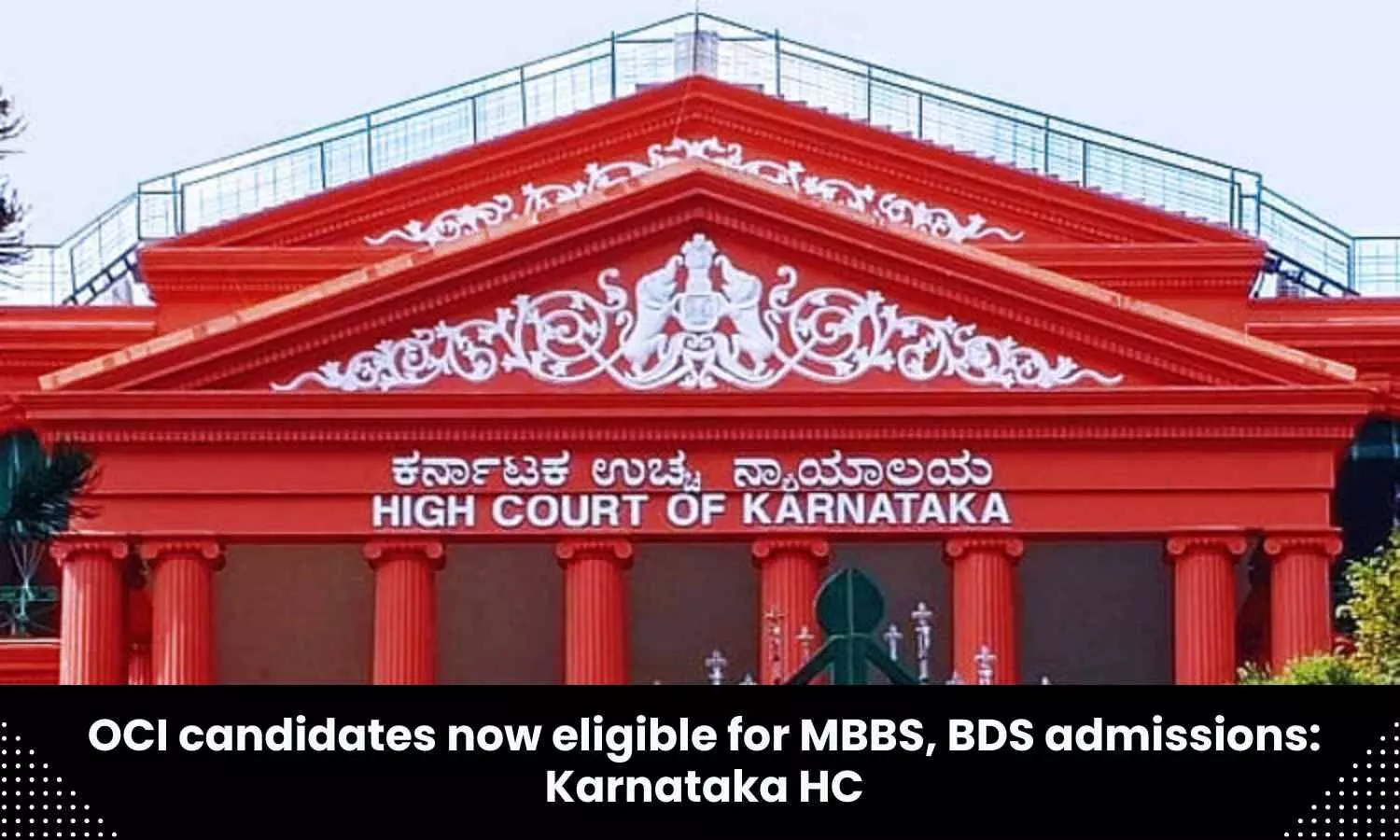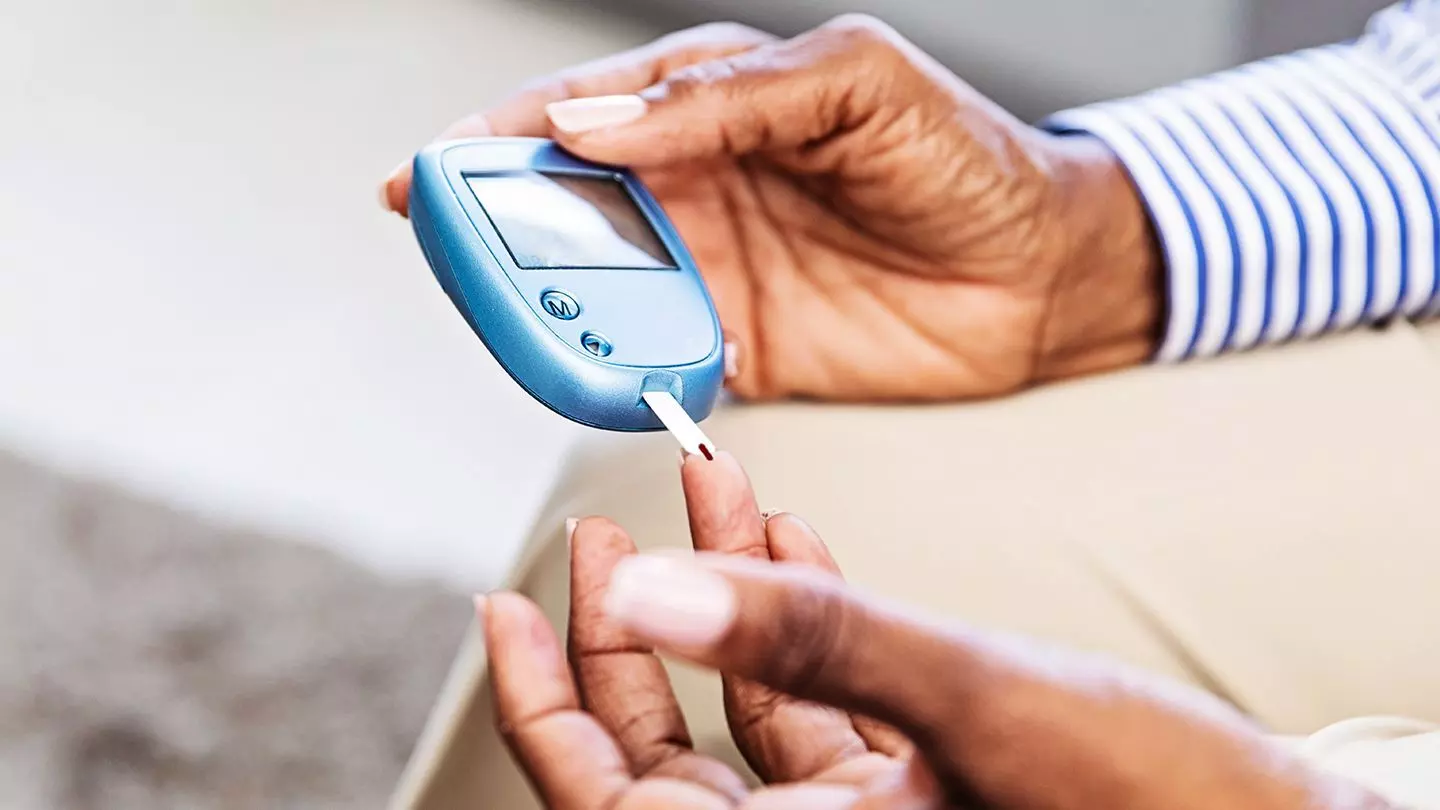Shorter scan to diagnose prostate cancer could increase availability and reduce cost
Powered by WPeMatico
Powered by WPeMatico
Powered by WPeMatico
Powered by WPeMatico

Mumbai: Global pharma major Lupin Limited has announced that it has received approval from the United States Food and Drug Administration (U.S. FDA) for its Abbreviated New Drug Application (ANDA) for Valbenazine Capsules, 40 mg and 80 mg, to market a generic equivalent of Ingrezza Capsules, 40 mg and 80 mg, of Neurocrine Biosciences, Inc.
“Lupin is one of the first ANDA applicants and is eligible for 180 days of shared generic exclusivity,” the Company stated.
The product will be manufactured at Lupin’s Nagpur facility in India.
Valbenazine Capsules, 40 mg and 80 mg (RLD Ingrezza) had estimated annual sales of USD 1621 million in the U.S. (IQVIA MAT February 2024).
Medical Dialogues team had earlier reported the Company had received approval from the US health regulator to market a generic medication to treat bacterial infections, in America.
Read also: Lupin gets USFDA nod to market a generic drug to treat bacterial infections
Lupin is an innovation-led transnational pharmaceutical company headquartered in Mumbai, India. The Company develops and commercializes a wide range of branded and generic formulations, biotechnology products, and APIs in over 100 markets in the U.S., India, South Africa, and across the Asia Pacific (APAC), Latin America (LATAM), Europe, and Middle East regions.
Read also: Lupin schizophrenia drug Aripiprazole gets USFDA okay
The Company specializes in the cardiovascular, anti-diabetic, and respiratory segments and has a significant presence in the anti-infective, gastro-intestinal (GI), central nervous system (CNS), and women’s health areas. Lupin is the third-largest pharmaceutical company in the U.S. by prescriptions. The company invested 7.9% of its revenue in research and development in FY23.
Lupin has 15 manufacturing sites, 7 research centers.
Read also: Lupin bags USFDA nod for Eslicarbazepine Acetate Tablets for partial-onset seizures
Powered by WPeMatico

Ahmedabad: What started as a crisis in 2020 has now led to a remarkable expansion in medical infrastructure, with the city boasting over 1,500 major and minor hospitals and nursing homes—a significant 10% increase since 2021.
Amid the backdrop of the COVID-19 pandemic, Ahmedabad’s healthcare landscape has undergone a notable transformation over the past four years. However, this surge in healthcare facilities has come with its own set of challenges, particularly in the recruitment of qualified nurses and MBBS doctors to meet the growing demand.
Usually, Kerala serves as a key source of deploying nursing talent for the sector. However, factors such as rising minimum wages in southern states and heightened demand overseas have led to a shortage of nurses in the region. To address this gap, institutions like Apollo Hospitals have introduced innovative schemes aimed at attracting and retaining nursing talent. Neeraj Lal, COO of Apollo Hospitals in Ahmedabad, highlights the hospital’s initiative, wherein nurses undergo specialized training abroad in countries like the UAE and the UK before returning to their roles with enhanced skills and incentives, reports The Times of India.
Similarly, Babu Thomas, CHRO of Shalby Hospitals, acknowledges the rise in nursing colleges in Gujarat but emphasizes that the sector is still in its developmental stages. “We have begun training nursing and paramedical staff to meet the growing demand,” Thomas says, adding, “A similar shortage is observed in MBBS doctors, with many joining hospitals while simultaneously preparing for higher studies.”
As Ahmedabad grapples with these healthcare workforce challenges, the upcoming World Health Day on April 7 takes on added significance. According to The Daily, this year’s theme, ‘My Health, My Right,’ underscores the importance of healthcare accessibility and awareness, particularly in the context of the ongoing pandemic. Dr Tushar Patel, president of Ahmedabad Medical Association (AMA) told The Daily, “The pandemic cast a long shadow on healthcare in terms of how critical care and disciplines such as pulmonology and cardiology are seen, how medical infrastructure is assessed, and general awareness about health issues.”
Dr Bharat Gadhvi, regional head of HCG Hospitals and president of Ahmedabad Hospitals and Nursing Homes Association (AHNA), reflects on the city’s healthcare growth, noting the addition of approximately 140 hospitals since 2020-21, along with expanded infrastructure in beds and ICU facilities. “For the same, trained human resources is a must. We are attempting to address this need as an association and through representations to state govt,” he says, adding: “The Covid period caused us to increase the number of ICU beds in all hospitals, and it remains in use today.”
Powered by WPeMatico

Granting interim relief to a student, the Karnataka High Court bench recently held that students holding Overseas Citizens of India (OCI) cards are to be treated on par with Indian citizens while participating in Online counselling for admission to undergraduate medical and dental courses for 2024-2025.
“…we are of the opinion that this submission can be recorded that the OCI cardholders are to be permitted to participate in Online counseling for admission to undergraduate courses in Medical, Dental and Engineering for the Academic Year 2024-2025 for both Government and Private seats, on par with Indian citizens,” the HC bench of Justices Anu Sivaraman and Anant Ramanath Hegde ordered on April 02, 2024.
Powered by WPeMatico

New Delhi: Taking note of problems affecting the healthcare services at the Government-run hospitals in Delhi, a committee constituted by the Delhi High Court recently submitted its interim report listing the immediate, short term and long-term measures required to be implemented for the betterment of the system.
Medical Dialogues had previously reported that earlier this year, expressing displeasure over the “misleading” information provided to it on the functioning of medical equipment in GTB hospital, the Delhi High Court had advised the State to constitute a committee of doctors to examine the hospitals run by the city government to come up with a solution. These directions were issued by the Court while considering a PIL initiated by it on its own in 2017 concerning the issue of the non-availability of ICU beds and ventilator facilities in government hospitals in Delhi.
Consequently, the Delhi HC on February 13 formed a six-member committee of experts to evaluate and improve the medical facilities run by the State Government and Municipal Corporation of Delhi. Last week, the Committee submitted its Interim Report identifying the measures to improve the healthcare system in Delhi.
Here are the key takeaways from the Interim Report of the panel, which was submitted to the High Court:
The panel has identified the lack of manpower including the inadequate number of specialist doctors, GDMOs, Senior and Junior Residents and other staff in 38 government-run hospitals in Delhi. As per the report, among the 1700 sanctioned posts of specialists in these hospitals, a total number of 818 posts (around 50%) are still lying vacant. Further, it noted that 189 out of 741 sanctioned posts of GDMOs are lying vacant and 762 out of 2953 posts of senior residents are also unfilled. In the case of Junior Residents, 542 posts out of 2250 sanctioned posts are vacant. There is a huge vacancy in respect of Nursing and Para-medical staff as well.
1. Give Autonomy to Hospitals for Contractual Employment:
To fill up these vacant posts of Specialists, GDMOs, and resident doctors immediately, the panel has recommended giving autonomy to the respective hospitals to fill up the vacant posts on adhoc/contractual basis.
It has been recommended by the committee that emoluments and other benefits for the contractual employees should be at par with the regular appointments to attract candidates for such contractual employment.
“Filling these posts will be easier if the salary is 25% more than that of a regular employee,” recommended the panel.
2. Hire Visiting Consultants on Hour-based Remuneration:
Noting around 50% vacancies of specialists in the Delhi-based hospitals, the panel suggested paying remuneration based on working hours to the visiting consultants to deal with the shortage of specialists. In its interim report, the panel recommended that such visiting consultants should be paid Rs 1.5 lakh plus incentives for 4 hours, Rs 3 lakh plus incentives for 8 hours, Rs 4 lakh plus incentives for 12 hours and Rs 2 lakh plus incentives or on-call basis for night calls.
As a long-time measure to tackle the scarcity of specialists in Delhi government hospitals, the committee has suggested creating a panel of consultants comprising private practitioners who can cater to government hospitals on a part-time basis. However, the committee recommended ensuring that such specialists were receiving at least 1.5 times more salary or fees than that of a regular employee on weekdays and double on holidays and weekends.
3. Compulsory One-year Residentship at Parent Institutes:
Taking note of the huge vacancies in the posts of Senior and Junior Residents, the committee, constituted by the Delhi High Court, has recommended making one-year residentship (JRs/SRs) compulsory at the parent institutes where the doctors pursued their MBBS or MD courses.
“Compulsory one year of SR ship in the institution from where MD is done (like being followed in some states/Institution),” the panel recommended in respect of the vacant posts of Senior Residents.
Similarly, for the vacant posts of Junior Residents as well, the panel suggested introducing “compulsory one year of JR ship in the institution from where MBBS is done like being followed in some states/Institution.”
4. Implement PPP Model to Deal with Shortage of Equipment:
In its report, the panel highlighted the huge numbers of non-functional medical equipment in the Delhi hospitals and suggested implementing a Public-Private Partnership (PPP) model for CT scan and MRI services by identifying successful bidder for this purpose. It also suggested that PPP model or leasing models could be implemented for procuring various equipment like ultrasound machines, dialysis machines, ventilators, lab diagnostic machines, ICU and cardiac monitors, ABG machines, etc.
Currently, at the Janakpuri Super-Specialty Hospital {JSSH) and PGI Rohtak a PPP model is running successfully. In all hospitals where CT/MRI scan or radiologist is not available, the aforesaid model can be adopted and implemented, especially in level 3 & 4 hospitals, highlighted the panel.
5. Requirement of Additional ICU Beds:
Referring to the recommendations of the World Health Organization (WHO) of having 3 hospital beds for a population of 1000 people, the panel noted in its report that for around 3 crore population in Delhi, 90000 hospital beds are required. It also highlighted that as a general rule, it is suggested that there should be 5-10 percent of hospital beds as ICU beds. This number can be more in a tertiary care or a super-specialty hospital. Some of the Delhi hospitals have up to 25% of hospital beds as ICU beds.
As per the report, currently, Delhi government hospitals have 1058 ICU beds. However, according to the committee, these beds should be enhanced to 2028 beds by adding 1046 additional beds in the existing hospitals, but eventually Delhi will require 4500 beds out of which Delhi government hospitals should contribute at least 2400 ICU beds.
6. Centralised Command and Control Room, Referral Coordinator in Every Hospital:
Considering the issue of providing real-time information concerning the availability of ICU/HDU beds in various hospitals and their timely availability for patients, the panel suggested setting up a centralized command and control room (CCR) by the IT department of GNTCD which should be manned by adequately trained executives and medical professionals round the clock.
“This control room should at least have a live screen showing the location of available emergency and ICU hospital beds and medical services (like CT I MRI, OT facility, etc.) in the near vicinity of the patient and the promptness and availability of an ambulance service. There should be a screen showing region-wise Gee-mapping of all the Delhi hospitals with dynamic details of available facilities,” recommended the panel.
Further, the panel recommended that every hospital shall designate a referral coordinator, who shall update the information on the dashboard linked to the Centralised Command and Control Room (CCR).
7. Reverse Referral Policy:
To ensure that healthcare resources are utilized optimally, the panel constituted by the Delhi High Court suggested implementing a reverse referral policy to streamline patient transfers from higher-level to lower-level facilities when appropriate.
8. Convert large service hospitals into medical colleges:
The committee recommended in its report that spending money on large service hospitals results in suboptimal outcomes as the staff of such hospitals is not updated to the recent developments of rapidly evolving medical science. Therefore, they are inclined to refer difficult patients to medical colleges or tertiary care institutions.
As per the panel, by increasing the budget of such hospitals by around 20-25%, these institutes can be converted into teaching institutions. This will ensure that the specialists of such institutes will become teachers and they will remain updated and in return will produce medical graduates.
9. Proposal to create the “Delhi State Health Authority”:
The panel has recommended setting up a High-Power Delhi Health Authority directly under the control of the Principal Secretary of Health, Department of Health and Family Welfare, Government of NCT of Delhi. It suggested that there should be a Central Authority named “Delhi State Health Authority” (DESHA) and further “District Health Authority” in the districts.
As per the panel, DESHA should be chaired by the Principal Secretary of Health and also comprise the Director of OSHA. It should have a 24×7 working office and should be manned by the CMOs around the clock. DGHS (Govt of India), DGHS (Delhi), Director, Lok Nayak Hospital, Director, GTB Hospital, Director, Hindu Rao Hospital, and Director IBHAS should be other members of the committee.
The committee recommended that the Authority will have the District Level Dm/DC as In-charge & responsible for implementation & execution. Their responsibility will be to ensure any healthcare emergency in their respective districts will be attended through Central Control room and appropriate action is taken. It will enable timely action as desired.
Subsequently, it will conduct arrangement and audit of hospitals in terms of service provided, outcome and other infrastructure-related issues. Such an authority will also have a grievance redressal mechanism, recommended the panel.
10. CGHS Rates at Private Hospitals:
The report highlighted that the Delhi Government currently has the Delhi Arogya Kosh (DAK) scheme which allows the patient to avail the services of private hospitals at CGHS rates.
Such facility can be extended to emergency services (E-DAK) as well, recommended the panel, adding that this will ensure that any patient in an emergency can be transferred to the nearest private hospital and avail the services at CGHS rates and have online approval within 4 hours.
“Every citizen should with a Delhi Aadhar card should be entitled to receive emergency health care at any nearby private hospital by producing the Adhar card. Some mechanism for the migrant population should also be worked out in this regard,” the panel recommended.
“Aadhar card holders should be permitted to avail such facilities and the government should sign MOUs with select private players who can provide care at CGHS rates,” it further added.
Powered by WPeMatico

USA: Treatment with empagliflozin did not lead to a significantly reduced risk of first hospitalization for heart failure (HF) or death from any cause than placebo among patients at increased risk for HF after acute myocardial infarction (MI), according to the EMPACT-HF trial. The findings were published online in the New England Journal of Medicine on April 6, 2024.
Between empagliflozin and placebo groups, the researchers found no difference in the time-to-first-event analysis of hospitalizations for HF or deaths from any cause over approximately 18 months (8.2% vs 9.1%), which came out to 5.9 and 6.6 events per 100 patient-years, respectively (HR 0.90).
Mortality alone appeared unchanged with empagliflozin (5.2% versus 5.5%), but there was a 22% reduction in first hospitalizations for HF (3.6% versus 4.7%, HR 0.77).
The SGLT2 inhibitor empagliflozin (Jardiance) improves cardiovascular (CV) outcomes in patients with heart failure, patients with type 2 diabetes who are at high CV risk, and patients with chronic kidney disease. The efficacy and safety of empagliflozin in patients who have had acute myocardial infarction are unknown. To fill this knowledge gap, Javed Butler, Baylor Scott and White Research Institute, Live Oak St., Dallas, TX, and colleagues conducted an event-driven, double-blind, randomized, placebo-controlled trial.
Patients who had been hospitalized for acute myocardial infarction and were at risk for heart failure were assigned in a 1:1 ratio to receive empagliflozin (n=3260) at a dose of 10 mg daily or placebo (n=3262) in addition to standard care within 14 days after admission. The primary endpoint was a composite of hospitalization for HF or death from any cause as assessed in a time-to-first-event analysis.
Based on the study, the researchers reported the following findings:
In conclusion, the SGLT2 inhibitor empagliflozin did not exactly prevent deaths and heart failure events when initiated atop other standard therapies for acute myocardial infarction, but the cumulative risk did go down.
Reference:
Butler J, et al “Empagliflozin after acute myocardial infarction” N Engl J Med 2024; DOI: 10.1056/NEJMoa23104051.
Powered by WPeMatico

A recent study found a significant discovery in the treatment of patients with from type 2 diabetes (T2D) with concurrent atrial fibrillation (AF) which is a combination that markedly increases the risk of adverse cardiovascular events. The major outcomes of this study were published in The Journal of Clinical Endocrinology and Metabolism.
This comprehensive nationwide retrospective cohort study utilized data from the Taiwan National Health Insurance Research Database and the findings highlight the comparative effects of sodium-glucose cotransporter-2 inhibitors (SGLT2i) and glucagon-like peptide-1 receptor agonists (GLP-1RA) on the patients with and without AF.
The study spanned from May 1, 2016 to December 31, 2019 and observed a total of 344,392 T2D patients without AF and a total of 31,351 with AF treated with SGLT2i, along with 11,462 and 816 T2D patients with and without AF, respectively with GLP-1RA administration. The participants were monitored up to December 31, 2020 for various cardiovascular outcomes after employing propensity score stabilized weighting to ensure the equitable comparison between the two medication groups.
The results unveiled a striking distinction in treatment outcomes, specially for the patients with concomitant AF. The individuals treated with SGLT2i experienced a significantly reduced risk of hospitalization for heart failure when compared to their counterparts on GLP-1RA with an incidence rate of 2.32 versus 4.74 events per 100 person-years. SGLT2i was associated with a lower risk of composite kidney outcomes in both groups that highlights its benefits beyond heart health.
This study observed no significant difference between the two drugs in terms of major adverse cardiovascular events and all-cause mortality, regardless of AF status. This neutrality illuminates the complexity of T2D management along with cardiovascular conditions and highlights the need for personalized treatment strategies.
The positive effects of these findings are significant in diabetic patients with the high prevalence and risk of heart failure. This evidence strongly suggests that SGLT2i may offer superior protection against heart failure and renal complications for the T2D patients with AF which elevated the risk for these debilitating conditions. However, this study warrants further investigation to conclusively determine whether SGLT2i should be the preferred treatment option over GLP-1RA for this high-risk demographic.
Source:
Chan, Y.-H., Chao, T.-F., Chen, S.-W., Lee, H.-F., Li, P.-R., Yeh, Y.-H., Kuo, C.-T., See, L.-C., & Lip, G. Y. H. (2024). SGLT2 inhibitors vs. GLP-1 receptor agonists and clinical outcomes in patients with diabetes with/without atrial fibrillation. In The Journal of Clinical Endocrinology & Metabolism. The Endocrine Society. https://doi.org/10.1210/clinem/dgae157
Powered by WPeMatico

Root canal treatment (RCT) may reduce cumulative inflammatory burden in T2DM and contribute to the improvement of glycaemic control, suggests a new study published in the International Endodontic Journal.
This prospective cohort study was undertaken to evaluate the success rate of root canal treatment (RCT) in type 2 diabetes mellitus (T2DM) patients with targeted level and unachieved targeted level of glycaemic control as well as the impact of RCT on the glucose blood level in T2DM patients. Patients needing RCT were divided into three groups: these without T2DM, that is, the control group (CG), those with targeted level of glycated haemoglobin HbA1c < 7% (TL A1c) and the third ones with unachieved targeted level (UTL A1c), that is, with HbA1c ≥ 7%. Before RCT, HbA1c and the periapical index (PAI) score were assessed, as well as 1 year later.
RESULTS: The results showed less favourable treatment results of RCT such as a reduction of radiographic lesions in T2DM patients, particularly in subjects with UTL A1c. The intergroup analysis of PAI score at the 12-month follow-up revealed a significant difference in TL A1C (p = .022) and CG (p = .001) with respect to UTL A1c. Total number of healed teeth (PAI≤2) at the 12-month after RCT in UTL A1c was significantly lower in comparison to CG (p = .008). Contrariwise, RCT may improve the glycaemic control in diabetic patients with UTL A1c after 12 months of posttreatment. Regression analysis showed that UTL A1c patients were more likely to have AP persistence after endodontic treatment (OR = 4.788; CI: 1.157-19.816; p = .031). T2DM retards the AP healing and conversely AP contributes to increasing the inflammatory burden in T2DM. RCT reduces the cumulative inflammatory burden in T2DM and thus may contribute to improvement of glycaemic control particularly in patients with UTL A1c.
Reference:
Davidović, Brankica, et al. “Effects of Apical Periodontitis Treatment On Hyperglycaemia in Diabetes: a Prospective Cohort Study.” International Endodontic Journal, 2024.
Powered by WPeMatico
